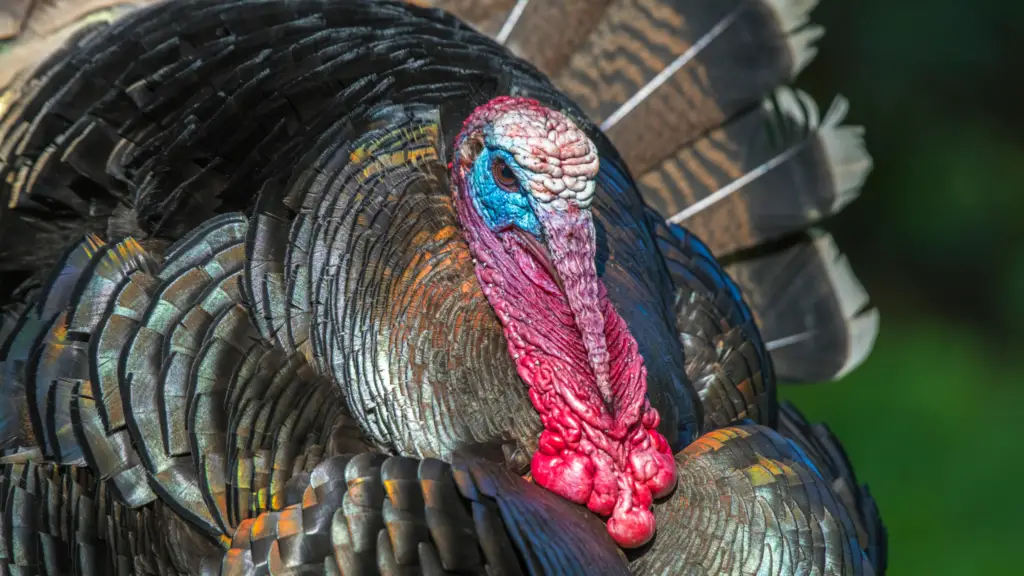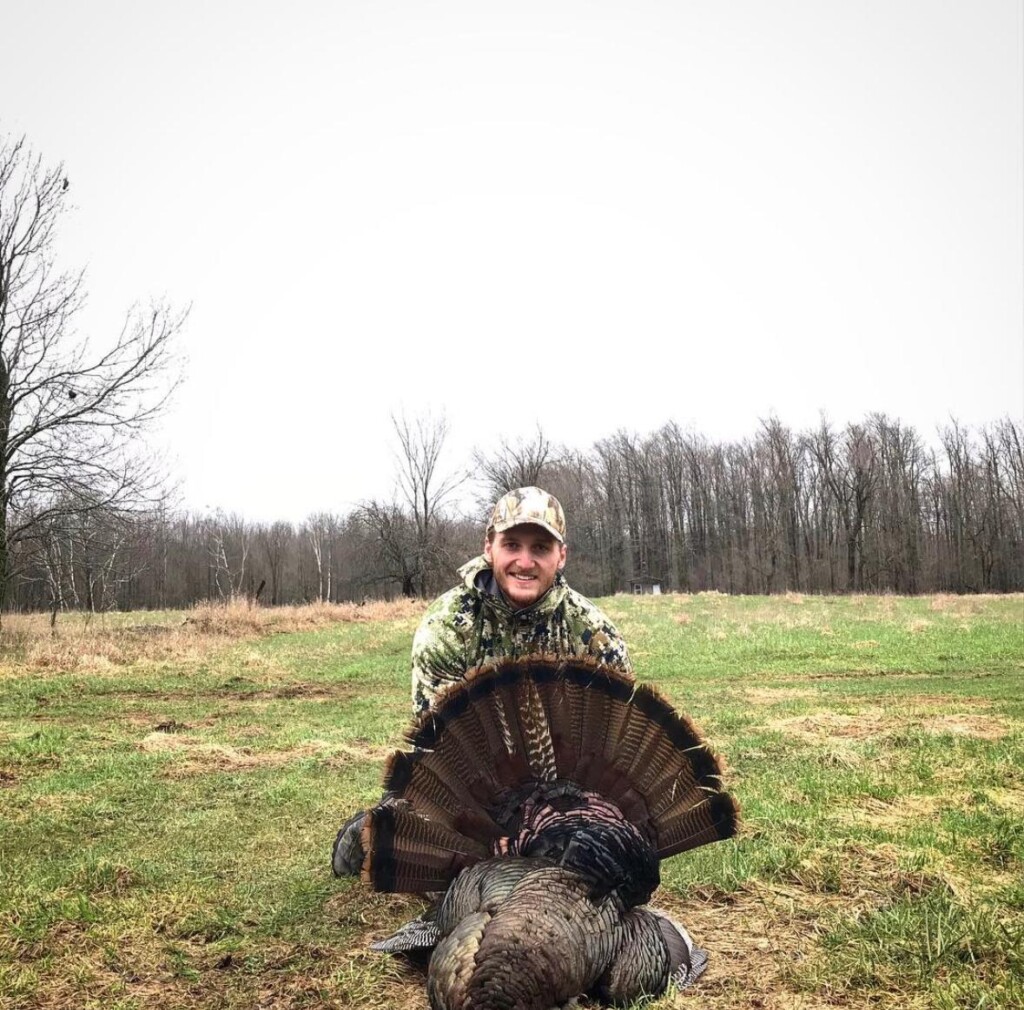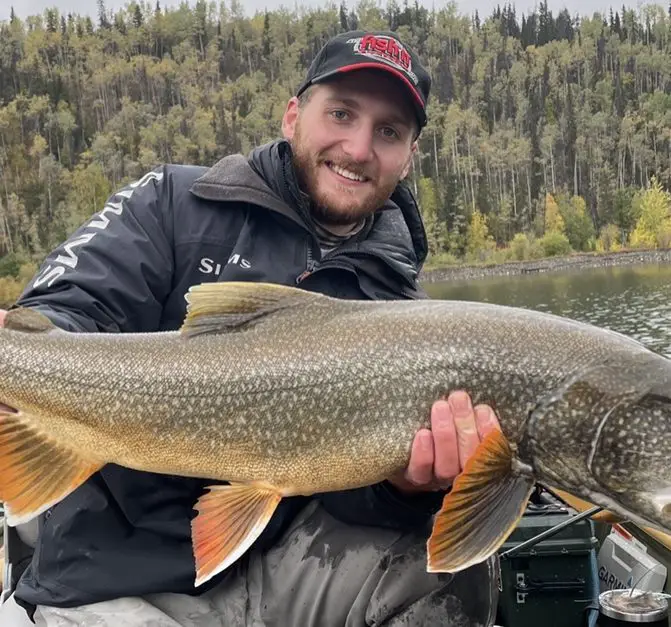The wild turkey is a fascinating bird, with its raptor-like feet, coarse and dangling chest beard, and a tendency to challenge everything from lightning to car alarms with its thundering gobble. While all of these are worthy of attention (some of which has been given), perhaps none is more interesting than the ever-changing colour of the bird’s notoriously unsightly head.
The Seven-Faced Bird

The turkey’s ability to change the colour of its head has long been observed by all those who have encountered the bird at close range. In Japan and Korea, this defining feature is represented in the bird’s name, Shichimencho and Chilmyeonjo respectively, translated to English as “the Seven-faced Bird”. While seven faces may be a bit of a stretch, any hunter who has spent time with these birds will tell you that there are at least three: blue, white, and, unfortunately, red.
I experienced just how fast these birds can make these transitions first-hand a few years ago when hunting spring turkeys in Southern Ontario. The property I was hunting was a small plot of farmland that I have had permission to hunt for most of my hunting career. Since I am the only hunter on the property, save for a few close friends and family members, the turkeys see little hunting pressure and are often at least somewhat cooperative. During this particular season, however, I managed enough clumsy hunts early on to make the birds as wary as I had ever seen them. One of these clumsy hunts, however, resulted in some interesting observations.
I had spent much of the early season working the same big tom that I had run into on opening day, memorable for a lone white-striped tail feather that sat in the middle of his dark brown fan. Early in the second week of the season, after countless days of listening to him gobble in distant fields, the pale blue head of the familiar turkey emerged from the woods as he and his white-striped fan began strutting across the field, b-lined towards my decoys.
After a few curious pauses from the bird and a few more clucks from my mouth call, the tom was finally approaching shooting distance, his head still in dull, yet glorious, shades of white and blue. As the bird reached 40 yards, I watched him pause, his head raise, and its colour starting to deepen in bold shades of red. Thinking nothing of it and wanting to see more of this bird before I pulled the trigger, I attempted a seldomly-practiced “purr” on my mouth call to bring him within my preferred range of 30 yards. As soon as the sound left my lips, the tom’s now dark red head lowered and he began sprinting across the field, not to be seen until mid-May when I finally managed to take him.

What the Colours Mean
Turkeys are anything but easy to hunt, however, their flamboyant nature does provide some key insights into their moods that can help you make better decisions in the woods.
As seen in my unfortunate anecdote, head colour is one of the best clues. As the turkey approached, his head was in pale shades of white and blue. These colours typically signal a relaxed bird and are a good indicator that you are well hidden and that the bird is unaware of your presence. These colours are also known to appear pale when the turkey is preparing to mate, an excellent sign if the bird is moving in towards one of your hen decoys. This makes a pale-coloured turkey a welcomed sign for hunters and can allow you to relax and slowly bring your gun to your shoulder.
While the pale-coloured head can be reassuring, things can quickly change for the worse, as seen in my situation a few seasons ago. As the bird reached 40 yards and his head began to deepen in colour, I failed to recognize the signal that perhaps could have saved my hunt. Like the blushing face of an angry man, the head of a wild turkey will often flush with red when they feel angry or threatened. For the hunter, this means shutting down your calling or simply pulling the trigger, as the time to do so is surely running out.
If you have a male (jake) decoy in front of you, this can also signify that your decoy is working and the bird is likely preparing to charge.
Other Warning Signs
Besides head colour, the body language of wild turkeys can also tell you a lot about how they are feeling. Here are a few to look out for when in the woods this season:
Putting:
Putting is a short, woody-sounding call that is used by the turkeys when they are frightened or distressed. This can often sound very similar to the classic cluck sound that hunters try so hard to emanate, however, the sound will be noticeably shorter and sharper. If a bird makes this sound in your presence, you are likely found out and should get a shot as soon as possible. Hunters should also avoid using this call when in the field, adding yelps to the end of your clucks to make sure you are not sending off the warning signal yourself.
Wing Twitching:
Wing twitching is common amongst aggravated birds. If you are using a male decoy, this may not be any cause for alarm. If you are running a solo hen, however, get your work done as soon as possible as this bird is likely preparing to flee.
Head Up:
Since nearly everything in the woods is looking to eat them, turkeys are naturally wary and can often be seen with their head raised in the air as they scan the environment for any signs of danger. This is something that you are likely to come across on nearly every hunt, however, multiple birds raising their heads in sequence can often mean you have been found out.






One Response
Nature’s secrets can be figured out if you pay attention